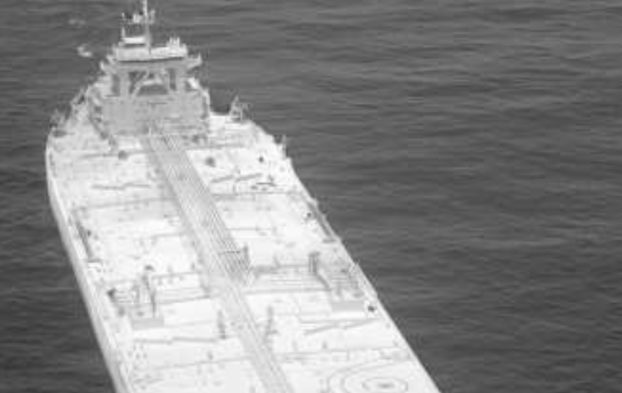Was The World’s ‘Northern-Most Island’ Erased From Charts?
by Kevin Hamilton (University of Hawaii) In 2021, an expedition off the icy northern Greenland coast spotted what appeared to be a previously uncharted island. It was small and gravelly,...


The All-White Tanker: Clean and Cool.
In his well reviewed 2007 book The Tankship Tromedy, Former MIT Naval Architecture professor and ship owner Jack Devanney has strong opinions on the best color to paint tankers: white!
The most effective way of controlling deck dribs and drabs is simple: white decks and topsides. Most tanker owners paint their decks a dark color, usually a brownish red. This does an excellent job of hiding rust, dirt and oil. That is its purpose. If the decks are wet, even the rustiest, dirtiest red deck can look beautiful from a distance. A common trick when a tanker is going to have her picture taken is to wet down the decks. The topsides are usually black; that way you can not see the omni-present streaks of oil running from the scuppers to the water.
In the mid-80’s we switched all our decks to a very light gray. Our crews were not the least bit happy about this, but the quality of the deck maintenance improved markedly. Now the smallest bit of rust or oil was clearly and embarrassingly visible. They had to do something about it NOW. And the decks were noticeably cooler.
Keeping the tank steel below the coating’s Glass Transition Temperature is critical to coating life in the top of the ballast tanks. The single most important means of doing this is hull color. Reflectance is the percentage of the incoming solar energy that is not absorbed by the surface. A black surface will absorb almost all the sun’s radiation. A favorite tanker deck color is dark red. Such a deck will absorb at least 60% of the solar energy. Even a very light grey will reflect only about 50% of the energy. But a pure while deck will reflect over 80% of the radiation. Red decks absorb more than four times as much solar energy as white decks.
The difference in deck steel temperature can be quite dramatic. When we bought the Hellespont Enterprise, she was laid up in Brunei Bay, latitude about 5o. She had a standard red deck. I regularly measured deck temper- atures in the high 50oC’s occasionally low sixties. Early in the afternoon, the steel would burn your hand if you left it on the surface for more than a couple of seconds. When we switched our decks to light grey in the late 80’s, peak deck temperatures dropped to the low fifties, not as much as I had hoped. But when we went with pure white on the V-Plus, the peak deck temperatures dropped dramatically. In ten ship-years of operation, we never measured a deck steel temperature over 44C on the V-Plus. On the hottest day in the Persian Gulf, the deck would be cool to the touch.
The steel temperature on the underside of the deck is essentially the same as the temperature on the top side. White decks and topsides ensure that the tank coating will always be below the Glass Transition Temperature. This means the tank will hardly breath, avoiding atmospheric pollution and reducing the chances of getting air into the tank. Aside from the glare, working on deck during the day is much more comfortable. And, at night, it is much safer. Of course, it also means you must issue sun glasses to the entire crew.
White is the only right color for tankers.
The Tankship Tromedy, a must read for all tankermen, is selling for thousands of dollars on Amazon but the ebook version is, for a limited time, FREE to download.
Join the gCaptain Club for curated content, insider opinions, and vibrant community discussions.


Join the 105,935 members that receive our newsletter.
Have a news tip? Let us know.
Access exclusive insights, engage in vibrant discussions, and gain perspectives from our CEO.
Sign Up




Maritime and offshore news trusted by our 105,935 members delivered daily straight to your inbox.



Essential news coupled with the finest maritime content sourced from across the globe.
Sign Up